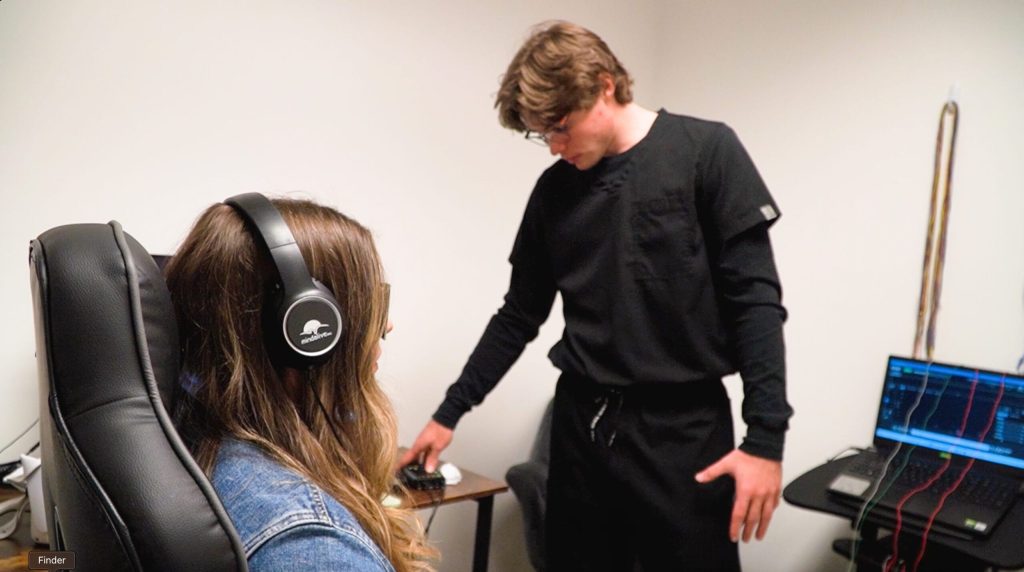Introduction: The Fusion of Meditation and Technology
Meditation has long been revered as a natural practice for calming the mind, improving focus, and building emotional resilience. Traditionally, it relies on subjective awareness and guidance from teachers or apps. However, in the age of wearable technology and brain science, a new frontier is emerging—meditating with real-time brainwave feedback. Neurofeedback meditation headsets promise to bridge ancient mindfulness techniques with modern neuroscience by providing users direct insight into their brain’s electrical activity during practice. This article explores how these devices work, their scientific basis, benefits, and limitations, as well as practical applications for everyday users.
Understanding Brainwaves: The Electrical Language of the Mind
Brainwaves are rhythmic electrical impulses generated by neuronal activity in the brain, measurable via electroencephalography (EEG). They are classified into several frequency bands, each associated with different mental states:
- Delta (0.5–4 Hz): Deep sleep and restorative states.
- Theta (4–8 Hz): Light sleep, deep relaxation, and creative insights.
- Alpha (8–12 Hz): Relaxed alertness and meditative calm.
- Beta (12–30 Hz): Active thinking, problem-solving, and focus.
- Gamma (30–100 Hz): High-level cognitive functioning and consciousness.
Meditation typically aims to enhance alpha and theta waves, indicating a relaxed but alert state. Neurofeedback devices detect these waves to inform users about their brain state in real time.
What Is Neurofeedback Meditation?
Neurofeedback is a biofeedback technique that measures brainwave activity and presents it as visual, auditory, or tactile cues. In meditation, these cues help practitioners recognize when their minds wander or become distracted and gently guide them back to focused attention or relaxation. This feedback loop trains the brain to achieve and sustain desired mental states more efficiently, accelerating mastery of meditative skills and enhancing self-regulation of emotions.
How Neurofeedback Meditation Headsets Work
Modern neurofeedback headsets are wearable EEG devices equipped with sensors that detect electrical signals from the scalp. These sensors transmit data to companion apps that translate brainwave patterns into interactive feedback, such as:
- Soundscapes that change in volume or tone depending on relaxation levels.
- Visual animations that evolve as users maintain focus or calm.
- Gamified tasks rewarding sustained meditative states.
The devices are typically wireless, lightweight, and user-friendly, designed for daily meditation sessions at home or on the go.
Popular Neurofeedback Meditation Devices on the Market
Several consumer neurofeedback headsets have gained popularity, including:
- Muse: Provides real-time audio feedback and tracks meditation sessions’ quality.
- NeuroSky MindWave: Offers basic EEG tracking with cognitive training apps.
- Emotiv Insight: Combines neurofeedback with broader brain-computer interface applications.
- FocusCalm: Integrates mindfulness training with heart rate variability and EEG data.
Each device differs in sensor number, data accuracy, user interface, and price, catering to beginners through advanced users.
Scientific Evidence Supporting Neurofeedback Meditation
Research suggests neurofeedback can improve attention, reduce anxiety, and enhance emotional regulation. Studies show:
- Enhanced alpha and theta activity during neurofeedback-guided meditation correlates with increased relaxation and decreased stress markers.
- Neurofeedback training improves executive function and working memory in healthy adults and clinical populations.
- Emotional resilience and mood stability improve with regular neurofeedback sessions, potentially via strengthening neural circuits for self-regulation.
Despite promising results, more large-scale randomized controlled trials are needed to establish standardized protocols and long-term efficacy.
Benefits of Using Neurofeedback Meditation Headsets
- Accelerated Learning Curve: Real-time feedback helps beginners quickly understand and enter meditative states.
- Objective Measurement: Provides data on brain states, reducing reliance on subjective feelings.
- Personalized Practice: Allows adjustment of meditation techniques based on individual brain responses.
- Emotional Regulation: Supports development of skills to manage stress, anxiety, and emotional reactivity.
- Focus Enhancement: Trains sustained attention, useful for work, study, or mindfulness in daily life.

Challenges and Limitations
- Cost and Accessibility: Quality devices can be expensive, limiting widespread use.
- Data Interpretation Complexity: Users may misinterpret feedback without proper guidance.
- Sensor Accuracy: Scalp EEG signals are weak and susceptible to noise and movement artifacts.
- Dependence on Technology: Risk of over-reliance on devices rather than developing intrinsic meditation skills.
- Individual Variability: Brainwave patterns differ between people, complicating universal feedback algorithms.
Integrating Neurofeedback with Traditional Meditation Practices
Neurofeedback can complement but not replace traditional meditation disciplines. Combining device-guided sessions with teacher-led instructions or mindfulness retreats enriches the experience. Users are encouraged to use neurofeedback as a tool to deepen awareness, not as an end in itself. Over time, practitioners may transition to unassisted meditation while maintaining benefits gained from neurofeedback training.
Future Directions and Innovations
Emerging trends in neurofeedback meditation include:
- Multimodal Feedback: Combining EEG with heart rate variability, respiration, and skin conductance for holistic biofeedback.
- AI-Enhanced Personalization: Algorithms adapting feedback to individual progress and preferences.
- Virtual and Augmented Reality: Immersive environments synchronized with brain states for enhanced engagement.
- Clinical Applications: Using neurofeedback meditation to aid treatment of PTSD, ADHD, depression, and chronic pain.
- Wearable Integration: Incorporation into smartwatches and other health devices for continuous mental state monitoring.
Practical Tips for Getting Started with Neurofeedback Meditation
- Choose a reputable device with clear instructions and support.
- Begin with short daily sessions to build comfort and consistency.
- Use quiet, distraction-free environments to enhance signal quality.
- Combine neurofeedback with breathing exercises, guided meditations, or journaling.
- Track progress using device data and personal reflections.
Conclusion: Can You Really Meditate with Your Brainwaves?
Neurofeedback meditation headsets represent a promising intersection of ancient mindfulness traditions and cutting-edge neuroscience. By making invisible brain activity visible, these devices empower users to cultivate focus and emotional resilience more efficiently. While challenges remain, ongoing technological advances and expanding research support their growing role in personal wellness. For those seeking a scientifically grounded, interactive meditation experience, meditating with your brainwaves could be the next step toward deeper self-awareness and mental balance.































